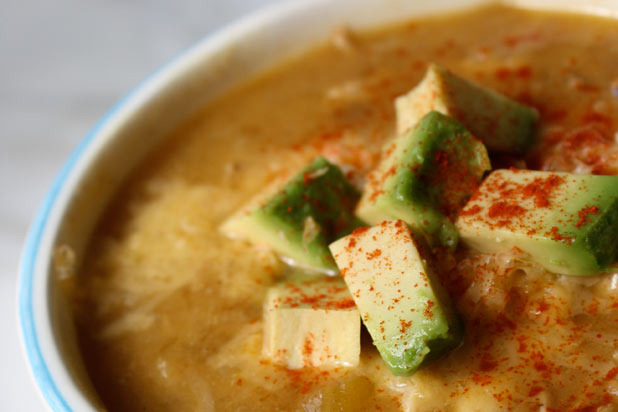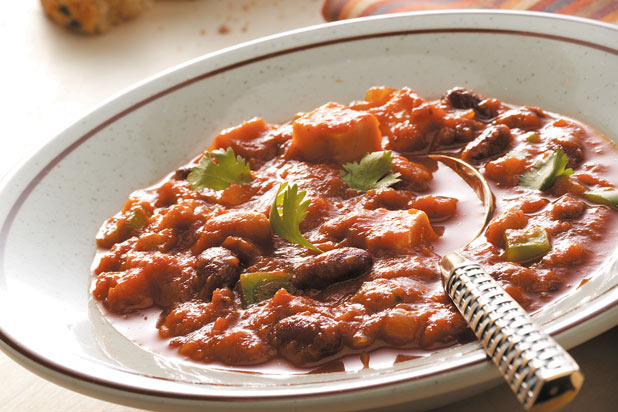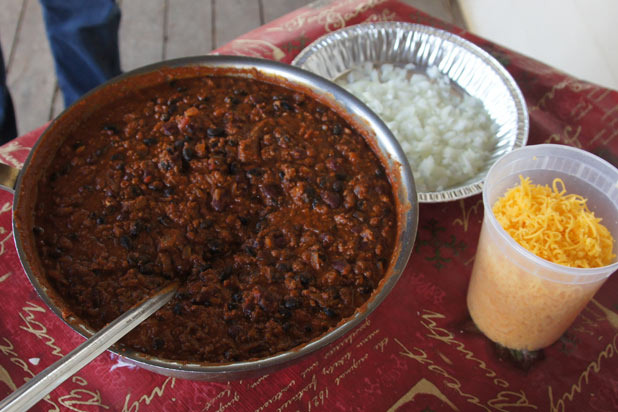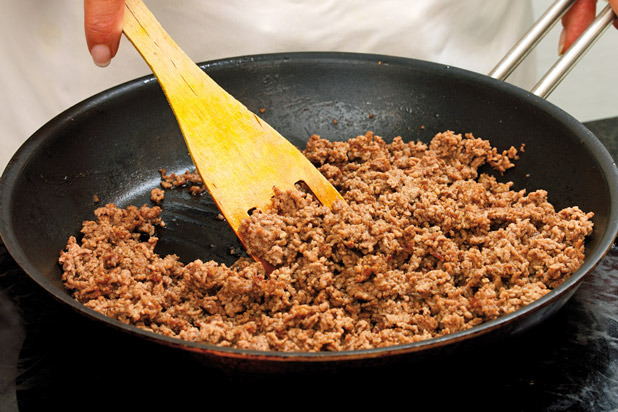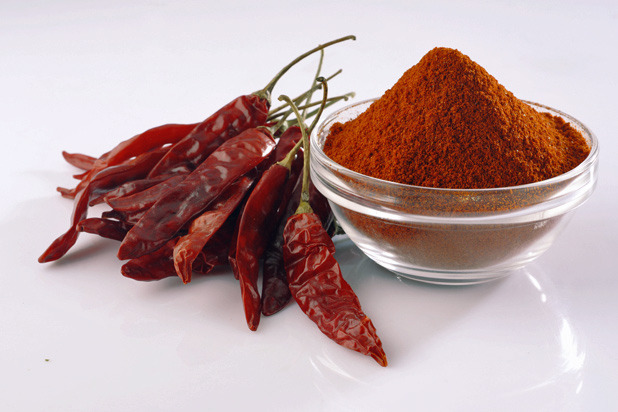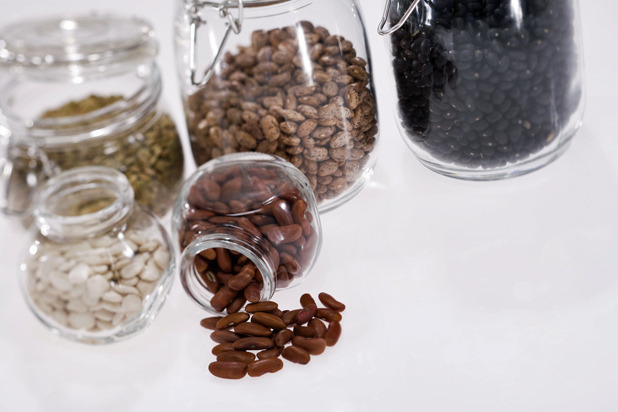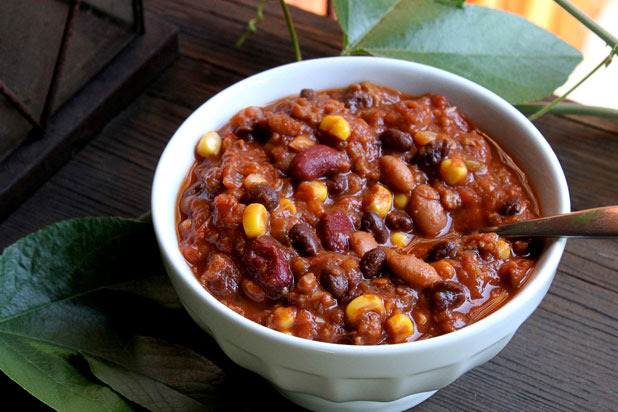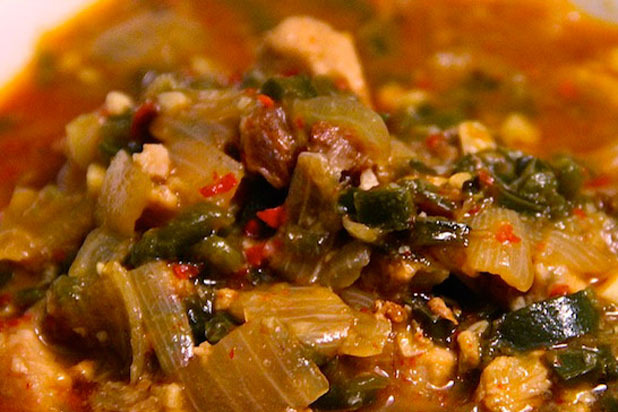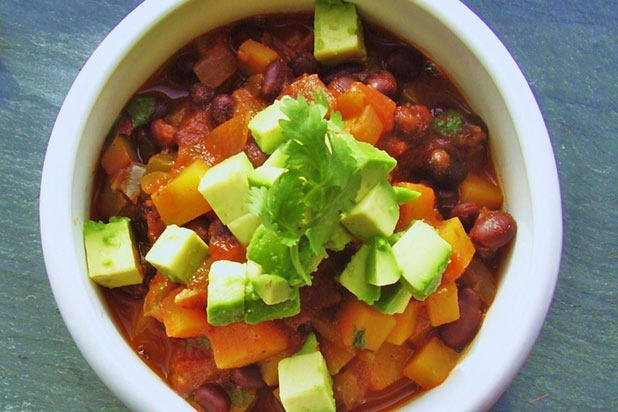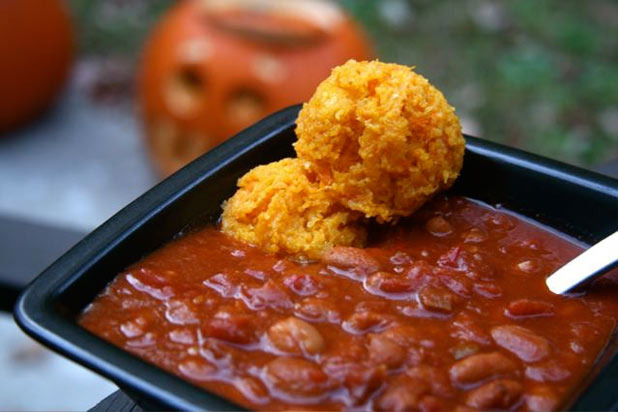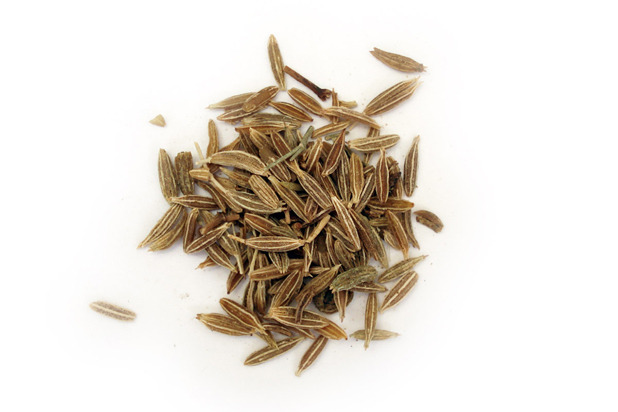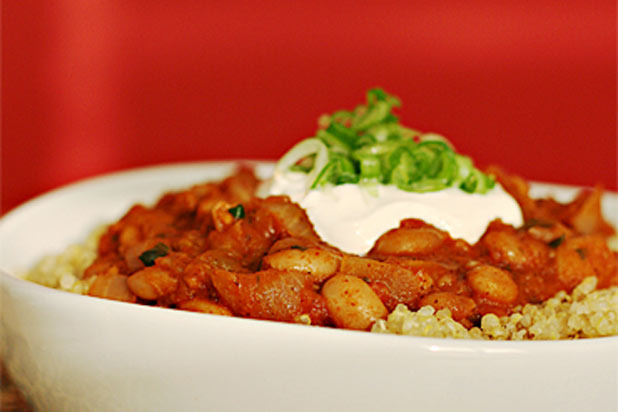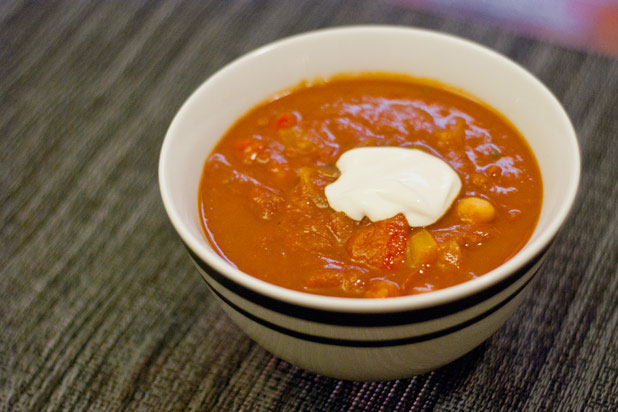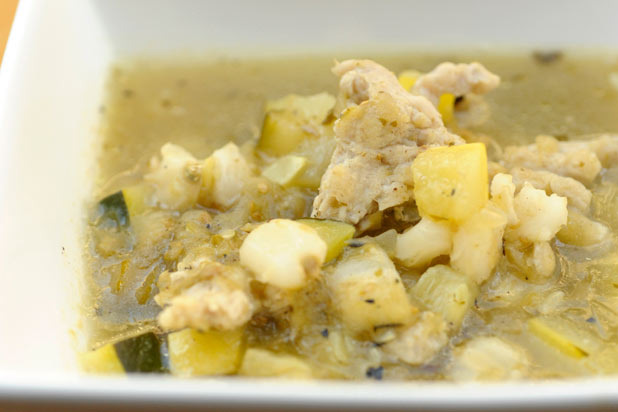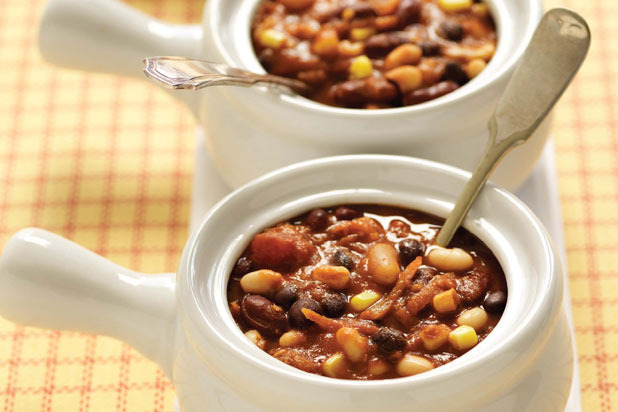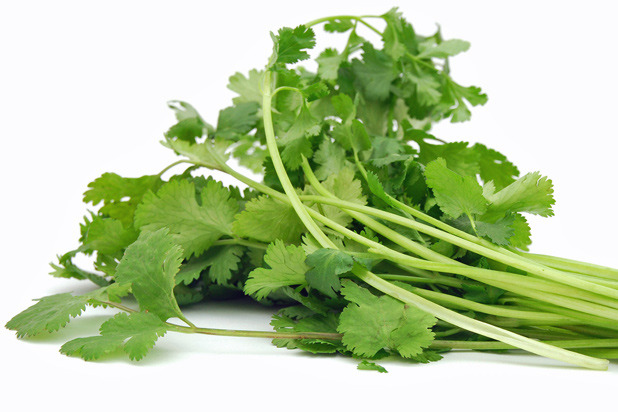9 Tips To Make The Perfect Chili Slideshow
While beef, pork, and suet (the fat that surrounds the kidneys in livestock) have been in the original formulation of chili con carne since the Chili Queens first started serving it in San Antonio, these days you're also likely to find bison, turkey, and perhaps even ostrich in chili. Whatever type of meat you use, make sure it's fresh and high-quality.
Recipe: White Chicken Chili
This is an update on my old white chicken chili recipe. It was originally created for our neighbors' annual chili and margarita cook-off every year...
— Heather Christo
Recipe: Anytime Turkey Chili
Taste of Home's turkey chili is a lean alternative to beef- and pork-based chili.
Recipe: Bison and Black Bean Chili
Quite frankly, I've served this chili to many folks who never knew the difference. Of course, a good bold chili is a great way to introduce new meats to those unfamiliar. Reminds me of the time I served up a heaping bowl of squirrel chili...
— Matt Moore
Recipe: Bison Chili
Executive chef Jeff Bolton of Second Home Kitchen and Bar, located in Denver, Colo., offers his take on alternative chili.
Tip: The Beef on Beef
Since beef is still the foundation of many modern chili recipes, we thought we'd give it some due consideration here. If using ground beef, health-conscious folks will want to lean (pun intended) toward a 90:10 meat-to-fat ratio, and chili aficionados who aren't terribly concerned about calories will want to lean more toward 80:20 for more flavor.
Ground beef is de facto in many chili recipes, but it's also worth considering whole cuts as well. That way, you can chop them up into small pieces that will break down and make the chili thick and rich, and also leave some larger pieces that will make for a satisfying bite. Some recipes will suggest using expensive cuts of steak like rib-eye, but we suggest you save your hard-earned money, or just grill the steak and eat it, and instead use an economical cut like chuck, shank, brisket, and rump roast or bottom round. Why? Because chili is all about slow cooking, and these cuts, which are good for braising, also work well for chili since they have a lot of connective tissue that breaks down and lends body and flavor.
Tip: Brown for Flavor
If you're using meat, whatever type of meat you use, make sure to let it sit out at room temperature to take off the chill from the refrigerator. Why? Meats that hit the pan right out of the refrigerator won't brown properly, taking the flavor with them. Instead, they'll steam in their own brownish juices before the exterior has a chance to crisp up. We've said it before many times, but we'll say it again.
1) Get the pot really hot over high heat.
2) Add cooking oil or fat with a high smoke point, such as canola or vegetable oil.
3) Let the oil heat up without smoking. If it smokes, take the pot off the heat and wait until it stops smoking.
4) Add the meat. Do not touch for at least five minutes.
5) Once the meat slides around easily, consider turning it; lift up a bit to check for proper browning and flip.
Tip: Chiles, Not Powder
If you've never made chili before, you probably have some idea that proper chili should be pretty darn spicy (sorry, spice-shy New Englanders), and you may be tempted to reach for store-bought chili powder. But, you'll get better results by finding some dried chiles like chipotles, guajillos, anchos, and pasillas, toasting them, and grinding them using a coffee grinder.
Tip: Beans, If Using
Canned beans are all right if you have nothing else on hand at home, but if you're out shopping for ingredients for chili, opt for dried beans instead. Canned beans often have a lot of sodium, and if you want to fine-tune the flavor of your chili, you'll want to start with unsalted beans, which means dried. Be sure to soak the beans overnight in cold water at least three times their volume.
If you're looking for a creamier texture, Barbara Ann Kipfer, author of The Culinarian: A Kitchen Desk Reference, advises cooking them with the lid on. Adding salt to the water for the overnight soak also helps soften them up. If you want to keep them separate and whole, cook them with the lid off.
Recipe: Lisa's Delicious 3-Bean Chili
Using three different kinds of beans for that hearty effect, this recipe is not only vegetarian but also vegan-friendly...
— Lisa Books-Williams
Recipe: Original San Antonio Chili… Yankee-Style
As an Italian-American, I'm not starving for culinary or cultural heritage, but I love Texas and its food. Still, when making chili, I usually exhibit Yankee pride and do my own thing...
— Arthur Bovino
Click here to see the Original San Antonio Chili... Yankee-Style Recipe.
Recipe: Black Bean and Butternut Squash Chili
I think you'll find this intriguing chili with the surprise additions of butternut squash and pumpkin pie spice doesn't need to be over-accessorized...
— Jackie Newgent
Click here to see the Black Bean and Butternut Squash Chili Recipe.
Recipe: Vegan Pinto Bean Chili
I realize there are about a million and one ways to make chili, so I figured I would make it a million and two.
— Sarena Shasteen
Tip: Spices
Many chili recipes will have at the very least cumin and coriander. Feel free to also experiment with cinnamon for a hint of sweetness; star anise, which enhances meaty flavors; and also clove, which will help balance out the heat of the chile peppers.
Whatever spices you decide to use, though, the flavor and aroma of your chili will be much improved if you start with whole spices, toast them in a pan, and then grind them yourself. Make sure to let them cool before grinding, or their volatile oils (which are the source of their flavor and aroma) will end up all over the sides of your grinder rather than in the pot itself.
Recipe: Pinto Bean Chili with Pan-Roasted Spices and Chipotle
Although I've created many recipes for different kinds of chili, the one I love most is this pinto bean chili with pan-roasted spices...
— Viviane Bauquet Farre
Click here to see the Pinto Bean Chili with Pan-Roasted Spices and Chipotle Recipe.
Recipe: Vegan Pumpkin Chili
This recipe puts a twist on regular chili with puréed pumpkin and a little dark chocolate...
— Jane Bruce
Recipe: Beef and Espresso Chili with Cayenne
Chris Henry, a personal chef based in Orange County, Calif., makes a mean chili using espresso.
Click here to see the Beef and Espresso Chili with Cayenne Recipe.
Recipe: Cincinnati-Style Chili
If you're thinking, chili... on spaghetti? Really? Believe it. Even this devout Texas chili fan has been made a convert...
— Maryse Chevriere
Recipe: Sausage Chili Verde with Hominy and Pumpkin
Aarón Sanchez serves up his take on the regional cooking of Mexico.
Click here to see the Sausage Chili Verde with Hominy and Pumpkin Recipe.
Tip: Stock — It's What Makes a Better Chili
Water or store-bought broth or stock is fine in a pinch, but to really kick up the flavor factor, there's no substitute for homemade stock. Wait, beer is pretty good.
Recipe: Vegetarian Chili
[This] is still a satisfying version of chili without losing out on hearty flavor...
— Tosca Reno
Tip: Take Your Time
There's nothing worse than rushed chili — dried beans that are halfway cooked, a thin consistency, and chewy or bland meat are not anyone's idea of good eats. Let it simmer until it's done; if the recipe says three hours, make time for it.
Tip: Garnishes
Whew, done at last. You're in the home stretch. After all that work, make sure you set out some great garnishes to really help your chili shine. Some great staples to keep on hand include sour cream, fresh cilantro, and scallions.
The Ultimate Chili Recipe
In the spirit of love and America, I'm offering up what I often serve at my place to enjoy on your NFL Sundays...
— Matt Moore

